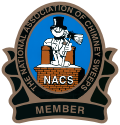



01953 881579
FAQ
Why do I need my chimney swept?
There are 3 basic reasons why you should get your chimney swept:
To protect your health
Breathing in the fumes from gas or solid fuel fires can cause serious damage to your health and in the worse cases prove fatal. Having your chimney swept will make sure that the flue is sufficiently clear to allow the fumes to escape safely out of the chimney.
To avoid a chimney fire
Having your chimney swept regularly will drastically reduce the chances of having a chimney fire. Chimney fires can cause property damage -
To avoid smoke damage
Each time the fire is used, soot will accumulate up the chimney. Gradually, this will decrease the size of the flue which, in turn, will lower the draw of the smoke upwards. If the chimney does not have enough pull, the smoke will enter into your room, not only causing irritation to you, but can also blacken your fireplace or the decorating above.
How often do I need my chimney swept?
This depends on how often you use your fire and what you burn. A general guideline is: For occasional evening and weekend use, once a year is enough. For more frequent use, especially if you burn a lot of wood, you should have your chimney swept once before you start having fires, usually in the autumn and then once again half way through the burning season, about January.
Does it matter what I use for fuel?
If you live in a smokeless zone then you will be restricted to burning smokeless fuels. To check if you live in such an area, you can phone your local authority and ask them. If, like most people, you do not live in a smokeless zone then it is up to you what you burn. House coal produces very good heat. Wood also is very good. It is a matter of preference.
With wood though, there comes a caution. Wood must be well seasoned before it is used in a fire. This means that all the sap and moisture should be removed from it. This is accomplished by covering the logs, leaving some ventilation for air, for at least a year from when the tree was cut down. If you use logs that are not seasoned, they will not burn well on the fire. This means they will give very little heat out but, more importantly, they will cause a build up of creosote. Most of the creosote cannot be removed by sweeping because it bakes onto the chimney walls. As the layer of creosote increases, so does your chance of a chimney fire.
Why does my chimney smoke?
There are different reasons why your chimney may smoke. Below is a list of the major causes. It may be that only one, or a combination of any of them could cause the smoke to blow back into your room.
Blocked chimney
Solution -
Cold air up the chimney
Solution -
Downdraught
Solution -
Inadequate ventilation
Solution -
The wrong type of cowl fitted on top of the pot
Solution -
The wrong sized fireplace
Solution-
How can I stop birds nesting in the chimney?
Birds nesting, especially Jackdaws, can be a problem. More so the nearer you get to the countryside. There are companies who make purpose built bird guards ( we fit them). Bird guards should always be used in preference to putting chicken wire on the pot. Proper bird guards are strong enough to withstand any efforts from the birds to pull them off. They do not reduce the size of your chimney pot in any way (which is important for the draw of your chimney) and they also allow for the sweep's brush to come completely out of it, ensuring a more thorough clean.
I have a gas fire, do I still need the chimney swept?
You should have your gas appliances checked and serviced regularly by a Corgi registered engineer. This should be done yearly or more often if a problem occurs. (See important advice on Carbon Monoxide). At the time of the service, the engineer will check the draw of the chimney and if there is a problem, sweeping the chimney will almost certainly be necessary.
Why do I have bits falling down the chimney?
Even after the chimney has been swept thoroughly, it is normal to have a small amount of bits falling. This could include soot, sand or bits of cement. This problem can increase with the age of the chimney because the sand-
Can the chimney be cleaned properly with a just a vacuum?
No, using good quality chimney sweeping brushes and equipment is the only method at the moment which will clean the chimney properly.